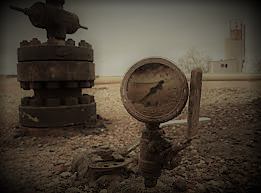The Queensland Court of Appeal in Linc Energy, and the Supreme Court of Canada in Redwater Energy, are each determining who pays for the remediation of contaminated land after a miner or oil exploration company goes under. The Queensland appeal decision is pending, the Canadian appeal is being heard on 15 February 2018.
The financial collapse of a mining company can leave in its wake not only the claims of unpaid creditors, but also the cost of environmental damage caused by the company’s mining operations which in the normal course the company is obliged to remediate. Regulatory law will often require bonds or security to be provided by the miner in the event that it collapses or does not pay. Those arrangements are not always effective.
This scenario is broadly being played out here in the matter of Linc Energy, and overseas, in Canada, in the matter of Redwater Energy Corp. My earlier comments are here.
The trial decision of the Queensland Supreme Court in Linc Energy Ltd (in Liq) [2017] QSC 53 revealed the ability of state laws to prevail over those of the Commonwealth in certain defined instances. Queensland’s Environmental Protection Act 2007 thus prevailed over the insolvency disclaimer provision – s 568 – of the Commonwealth Corporations Act. An appeal from that decision has been heard and a decision is awaited.
In the meantime, the Supreme Court of Canada has given special leave to appeal from a 2:1 decision of the Alberta Court of Appeal that the bankruptcy trustees of Redwater – Grant Thornton – could disclaim its contaminated oil wells left behind, but proceed to sell, for the benefit of the creditors of Redwater, and its secured lender, those wells that were productive. Although the constitutional and other issues are different in Canada, in essence the core issues are the same as here. Who pays to remediate the land? Can the liquidator simply disclaim an unviable and costly asset? Should the regulator’s claim for the costs of remediation have a priority claim over other creditors.
Like our High Court, the Canadian Supreme Court is selective in what matters it decides to hear. It seemed likely want to hear this matter because of the significance of the policy conflict between insolvency, constitutional and environmental laws, because the Court of Appeal was split 2:1, and because of the public debate that has ensued, mainly against the decision.
One comment reported that the decision “allows creditors to benefit at the expense of the environment and responsible companies by permitting receivers to avoid regulatory requirements that were put in place to protect the public and environment”. It is also reported that since the Redwater decision, “about 1,600 sites have been disclaimed by receivers, with estimated liabilities of more than $100 million”.
The clean-up cost of those unviable wells is left to the appropriately named Orphan Well Association, a Canadian industry-funded and government-backed group. It is a party to the appeal, along with the regulator.
In legal terms, a question is said to be whether the majority on the Court of Appeal “erred in its application of the Canadian constitutional doctrine of paramountcy” [like s 109 of our Constitution] by finding that the “Alberta oil and gas regulatory regime operationally conflicts with s. 14.06 of the Bankruptcy and Insolvency Act … and is inoperative to the extent of the conflict”.
One fundamental difference from Australian law, as I have explained, is that a Canadian insolvency trustee has statutory protection from liability for environmental breaches committed before their appointment, and to some extent after. This contrasts with Queensland’s ‘chain of responsibility’ law.
The Supreme Court is hearing the appeal on 15 February 2018: Orphan Well Association et al v Grant Thornton et al, Alberta Civil, by leave, 37627.



